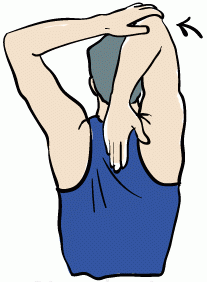Posted by
sf-admin onLast Updated 21st May 2019 at 3:06 pm
There is little else like it: the rush of gliding down a long stretch of open slope, bounding over moguls with impeccable timing, or flying through the halo of fresh-fallen powder.
Skiing in an experience we love, and we want to pass down this love to our children too.
Bonding as a family over memories and stories of the day’s exploits on the mountain will be a memory to cherish for all members of the family.
A ski holiday is an investment of your time in something that will be remembered for decades to come, but many people miss one of the best ways to ensure a positive, and fun-packed string of days on the slopes: physical preparation.
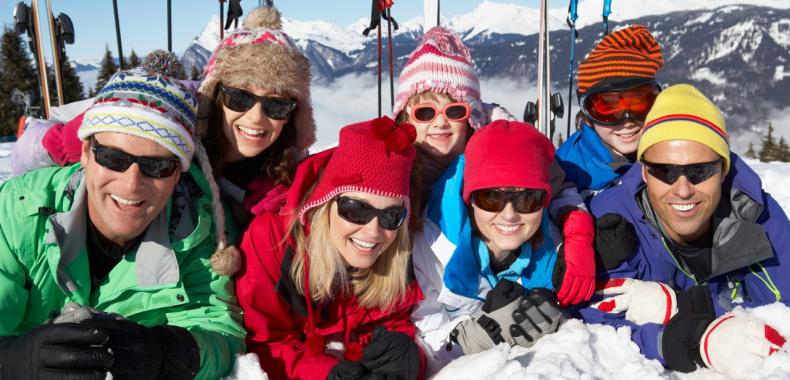
Why Prepare
For parents, the reasons to ensure some physical fitness prior to a ski trip is pretty obvious; we tend to have a less active lifestyle than we did when we were young, and our bodies are less able to cope with sudden changes in the level of activity we engage in.
For children, it is perhaps less obvious. Their bodies can usually react to sudden physical activity better than ours, and – in the case of some young people – they have more active lifestyles to begin with. All of this is true, and yet the benefits of a little training are not lost on the young; people of all ages will have a better ski holiday experience if they prepare their bodies for it.
Greater Enjoyment
The most compelling argument for a little investment in physical training is the enjoyment factor. By increasing your family’s basic fitness level, you’ll be increasing their ability to ski.
Skiing involves a lot of muscles that are not used much in daily life, and unless they get some preparation prior to hitting those moguls, or spending extended periods of time with the knees slightly bent, absorbing the shock of the slope’s bumps and contours, they’re going to complain pretty loudly.
Think of your body as part of your skiing equipment. The better the gear, the more likely you are to ski well and to have a good time.
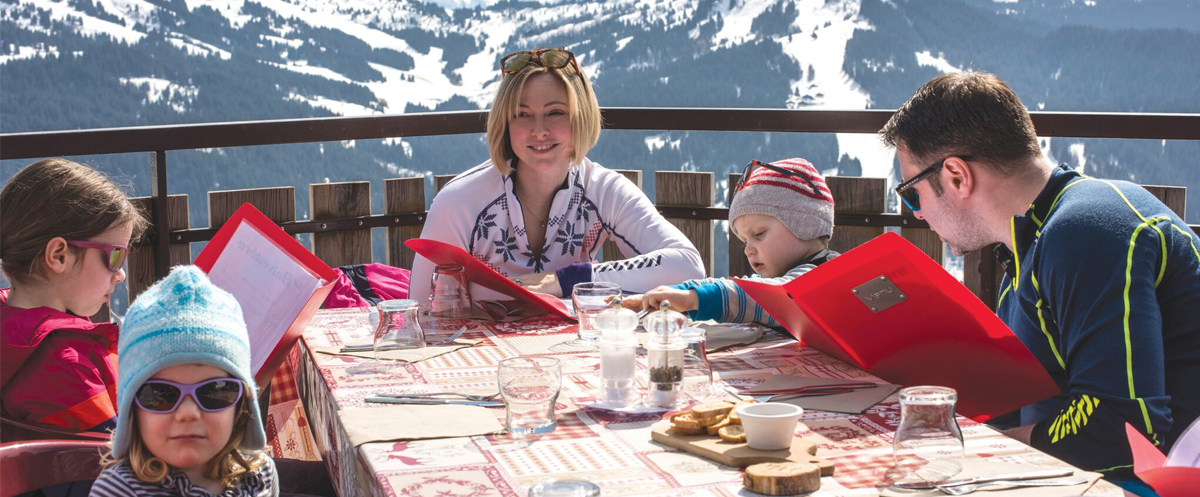
More Stamina
Closely tied to this is the issue of stamina. Even if your family is used to some walking as part of their daily commute to and from work or school, it won’t measure up to a day on the mountain. Even people with more physically-demanding jobs find that their work has developed very specific muscle groups, and these are unlikely to cover all you need to fully enjoy a few consecutive days of skiing.
Imagine that you and your family hit the slopes on day one. You all love it. Spend every available moment on the snow, and hit the mattresses with satisfied smiles and happy thoughts of the day’s exploits.
That’s a good thing. That’s what you wanted for your family.
Now imagine you all wake up in the morning, one with that deep ache in the lower back, another with a sharp ping in a knee, or the feeling that what’s needed is just a few more hours sleep… maybe an afternoon nap too.
This is the body’s way of recuperating from an unexpected and unusual level of exertion. It wants to rest. Sleep. Time to heal and to prepare itself for more unexpected exertion… but you don’t have time for that process once your holiday has begun; it has to happen beforehand.
Your family members might give up early in the day, or spend a significant portion of their resort time in front of a screen – and that’s not the holiday you had hoped for.
Prevention of Injury
Finally, a brief word should be mentioned regarding injury. We don’t like to talk about it, but any sport like skiing can result in a fall! A body that is limber, strong, and hasn’t already been exhausted, will go through a fall or collision better than one that isn’t. We hope this is never an issue for you or your family, and the best way to prevent it is with a few good lessons – and a body that can brush off a bump or tumble here and there.
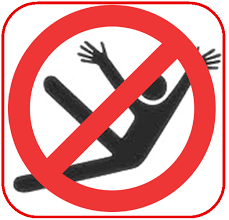
How to Prepare
Okay, so the arguments for a little preparation are there, and agreeing to a plan is half the battle, but how do you prepare for a ski trip? What exercises are best? How much should you do?
There are three main areas that need to be considered, and we’ve added a fourth one to help with motivation and anticipation of your trip. You’ll need to build flexibility, strength, and stamina, and nurturing expectation of a great trip will help to motivate you and your family.
You might even find that the time spent preparing becomes part of the great memories.
If your schedules don’t allow you to do these workouts at the same time or in the same place, you can still make it a family affair. Keep in touch using apps like FaceTime or WhatsApp, to encourage each other and maintain some accountability. Depending on your family’s dynamic, you may even want to brag a little and get a competition going.
A word of caution first. Most families won’t react well to a drill-sergeant approach; keep it light, and talk about the first part of this article to help your family buy into the benefits of physical preparation. If you have a family member who is already into sport and fitness, you may want to ask him or her to consult, to help plan the family training sessions.
With all of that in place, it’s time to begin. Here is a basic outline of what you’ll want to do – but feel free to customise it to your family’s needs and goals.

Build Flexibility
Of all three of these physical areas, flexibility is perhaps the most important.
Flexibility does a few beneficial things for you. First, it helps to prevent injury in the case of a fall. More range of motion in joints means a decreased chance of straining or tearing anything, and a better chance of getting back up with a sheepish smile and getting on with things.
Flexibility exercises don’t have to be elaborate or difficult either. Start with these simple ones. Stretch until it feels a bit uncomfortable – but not painful – and hold. When thirty seconds have passed, your body’s natural defence system will relax a bit, and you’ll be able to stretch a bit further. Hold that for about a minute.
You can do sets of these, or hold the stretch and move it a bit further without a break between. It is best to do this both in the morning and in the evening, but if you have to choose between the two, choose the evening – it will have the added benefit of improving the quality of your sleep.

Touch Your Toes
It’s a classic for a reason; it stretches out your hamstrings, calves, lower back, shoulders, and prepares your mind and body for further stretching to come.
Don’t feel like you have to lock your knees. You can have a slight bend in them if you like. You can also touch your toes from a standing position, or while seated on a firm surface (not a bed or sofa) with your legs out in front of you. The upright position will use gravity to help you stretch, but the seated version will help you to keep your knees in the right position and may be less stressful when you first begin.
Don’t worry if you can’t stretch very far at first; you will improve quickly with regular practice.

Calf Dips
With your toes on a stair or low block, lower your heels toward the floor. Be careful that your toes don’t slip off of the stair – it’s better to do this at the bottom than at the top of a staircase!
You should feel this in your calves, and possibly your shins as well. Between stretches, lift up on your toes as far as you can, as if you’re reaching for something on a top shelf.

Chest Stretch
Simply clasp your hands together on the back of your head (sitting or standing) and point your elbows backwards. This will stretch out your shoulders and chest.

Shoulder Pull
Take your right shoulder in your left hand and pull it up and across behind your head. Don’t scrunch your head or shoulder down, but instead keep both stretched upward, even while pulling the arm to the side.
When finished one side, do the other. If one is noticeably less flexible than the other, it doesn’t hurt to give it more sets until they are similar. Balance and symmetry are important when it comes to being flexible and coordinated.
Child’s Pose
Between stretches, this yoga pose is an excellent way to keep relaxed and feeling good. Just put your body in one of these versions of the pose (both arms forward or backward), and relax – gravity will do the rest. Hold the pose for as long as you like.
Remember, these are the basics and will be enough to improve your skiing experience, but feel free to add to them, especially if there is a part of your body that is especially in need of a little more flexibility.
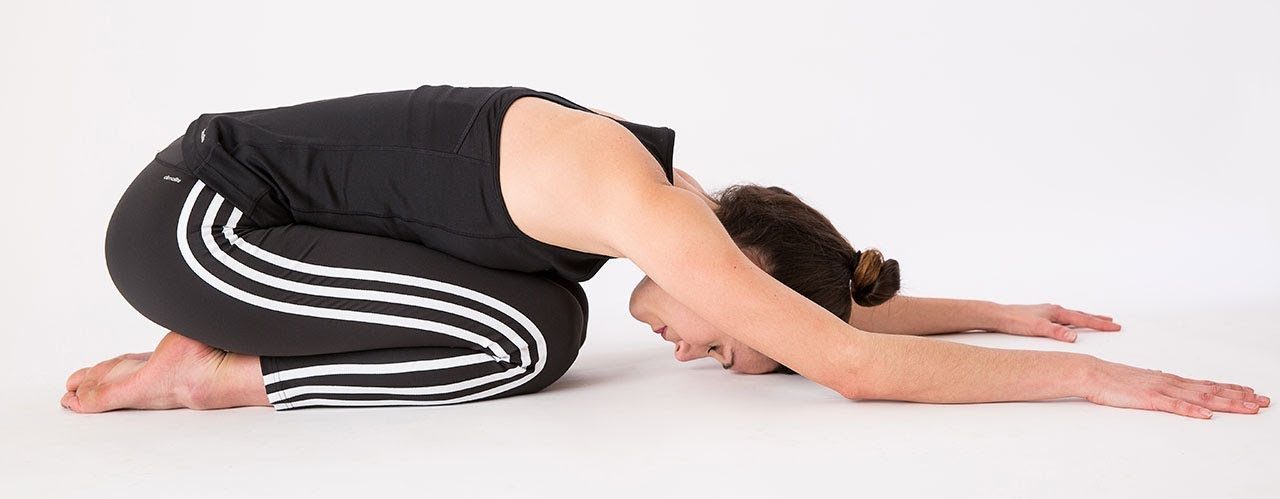
Build Strength
Strength is closely related to power, and it helps with things like absorbing the impact of hitting a mogul or breaking a fall. The stronger you are, especially in your legs and core, the less you will feel the impacts, and that decreases fatigue.
Do your strength training once a day, preferably not just before bedtime.
Some simple exercises to build leg and core strength are listed here. They don’t require any weights or equipment – though you can use those instead – and can be done almost anywhere. Remember that exercise should not cause you pain. Effort? Yes. Fatigue? Yes. But not pain.
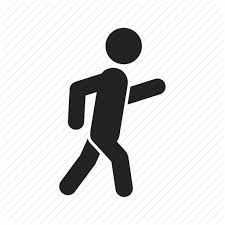
Squats
This is a very important one for skiers, as the motion imitates that of absorbing the bumps and contours of a downhill run. If you’re into trick skiing or jumps, it is even more beneficial.
Stand with your legs about shoulder width apart, or a little wider. Your hands can be on your hips or extended to help with balance. Lower yourself down toward the floor, until your knees are bent about ninety degrees. Do not go lower than this as it will put unnecessary strain on your knee joints. Pause for a second or two, and then rise back up. The movement should be slow, controlled, and as fluid and steady as possible.
When you first begin, you may want to hang onto a table-top or bannister for additional balance. For best results though, you should do your squats without holding onto anything.
This exercise will build up the muscles in your legs and will strengthen your core (the area around your middle). At the end of each set, you should feel some ‘burn’ in your thighs; this is normal.
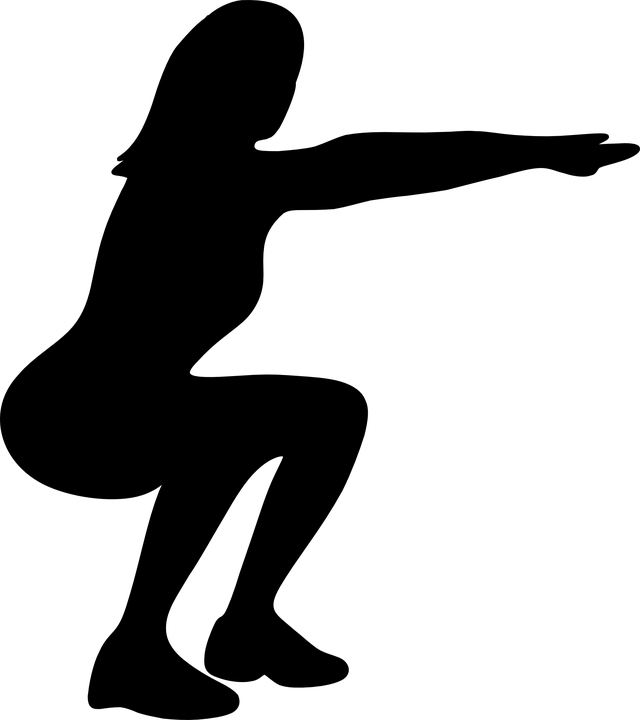
Lunges
Lunges work similar muscle groups as squats, with a few exceptions, but they have the added benefit of improving balance and coordination at the same time.
Stand as you did to begin your squats: feet about shoulder width apart, hands by your sides. Step forward with one leg, about a metre for an average-sized adult. Keeping your back leg straight, bend your front leg lean forward until your knee is bent about ninety degrees. Once there, pause a second, then push yourself back up to a straight standing position, in the same spot as you began. Keep repeating the motion, first with one leg forward, then the other one.
Just as with the squats, you will feel a ‘burn’ in the muscle as you near your fatigue point; that’s normal.
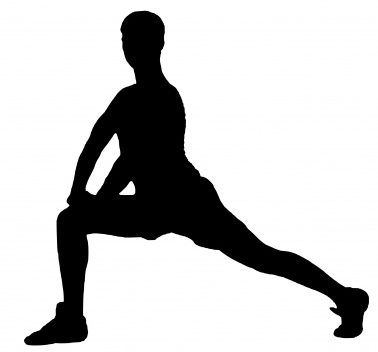
Push-Ups
Push-ups are known for strengthening chest and arm muscles – great for handling ski poles – but also important for skiers is a strong core. The muscles that criss-cross and wrap around your central torso are essential for a good skiing experience.
Some members of your family may not be able to do the ‘standard’ push-up, with all of your body weight on your hands and toes. That’s not a problem; modify the exercise by putting weight on your knees instead of your toes.
How many push-ups you do is not important; what matters is that you work your muscles until you feel some significant fatigue. Your body will respond by strengthening them for later exertion. In this case, that means the slopes!
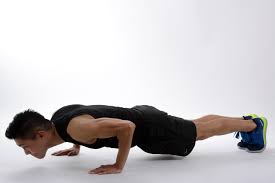
Crunches or Modified Planks
Working the abdominal muscles – part of strengthening your core – can be among the most uncomfortable parts of a workout. Often when exercising the abdomen, it is the lower back that pays the price in pain and discomfort. Avoid straining your back by choosing an exercise that feels secure to you, and don’t overdo it. Any little bit helps, but too much, even of a good thing can harm you.
To do a crunch, lie on your back with your feet in the air and your thighs up at about a ninety-degree angle from the floor. Clasp your hands behind your head and lift it up off the floor. Using your abdominal muscles only, and keeping your lower back as flat as possible against the floor, tilt your pelvis as if you were trying to touch your hips to your chest. Hold that position for a count of 3-10 second, then slowly return to the original position and relax.
To do a modified plank, take a seat on the floor and rest your shoulders on a bed (you could also use a sofa or armchair). Stretch your legs out in front of you (about shoulder width apart for stability). With the back of your head pressed against the bed, lift your body up and straighten it out, like a plank. Hold this position, concentrating on not letting your bottom sag or your stomach arch up toward the ceiling. Hold for a count of 10-30 seconds, then lower to the floor in a slow, controlled manner.
Repeat the motion, holding it each time until you feel some fatigue. Try to build up to a 30-second hold time.
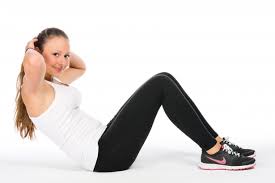
Build Stamina
Stamina is one of those things that is happily opportunistic – anything you can do to get out there and moving will help increase your stamina on the slopes. Add to it a few of these activities each week, and the benefits will multiply.
Take a Walk
Get out there and move your body. Your heart rate will increase, as will your breathing, and your chest will expand farther to allow greater intake of air. All of these things will benefit you when you are doing even moderate exercise during a full day on the slopes.
Add to this the benefits of toning your muscles, and perhaps losing a few of those spare pounds, and the subtle difference will make a huge impact on your ability to make it a whole day – then two, then a long weekend – on the mountain.

Do Some Gardening
Why not make those household chores more enjoyable by viewing them as training for your ski holiday? Who would’ve thought you’d compare skiing in white, fresh powder with raking leaves, mowing the lawn and even trimming the hedges! A little gardening can do wonders in toning your arms and working your legs and core. You’ll be better able to use your poles, and your arms won’t tire as quickly. Not only this, but you’ll have a great-looking garden and an additional workout!

Take the Stairs
We hear this all the time because climbing (or descending) stairs is a great way to burn extra calories. For skiers though, it is even better. The action of stepping up imitates the motions needed when skiing much better than walking does, and the action of stepping down conditions your thighs for the repeated impact of checking forward momentum – a key ability when skiing, especially for mogul work.
Whatever you decide to do – we suggest a varied combination of many things – the key is to do something each and every day, for at least half an hour, and for at least a month or two before the big trip. You’ll be very thankful that you did.
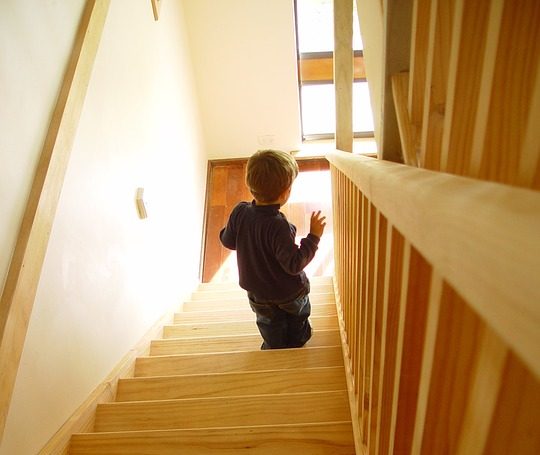
Build Up Some Expectation
Building up expectation is something that will help you and your family through workouts when motivation is low, and it can also be a valued part of the ski holiday experience. It has long been known that preparation, and the journey itself, is often as enjoyable as reaching the destination.
Talk with your family about the resort you’ll be visiting. Ask them what they want to see and do while there. Watch a ski-related film or some highlights on YouTube from great resorts and ski events. Encourage them to find similar videos to show you, and don’t be afraid to let their expectations be very different from yours. You’ll have the best time if everyone is able to have fun the way they want to, as much as possible, and your acceptance of that will increase the chances of you all having fun together, as a family, too.
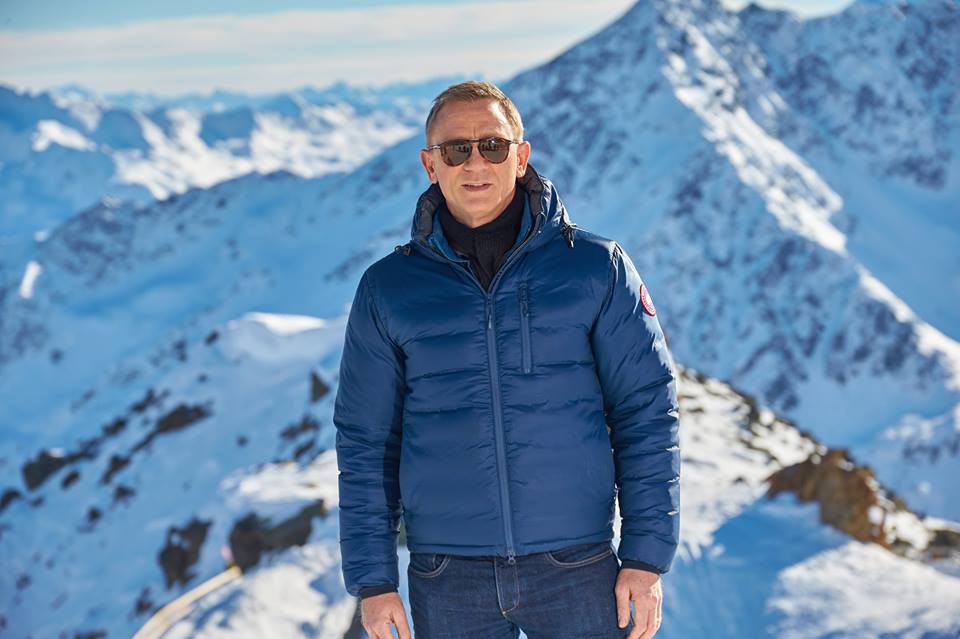
The Results
Your ski holiday is an investment in bonding and creating life-long memories of fun had as a family. It’s worth it to invest in making the holiday itself the best experience possible. Even if you’re already in good shape, it never hurts to put a little extra effort in to make sure your body is able to support what your heart and mind want to accomplish.
With a little physical preparation, your family ski holiday will be a great time, and a treasured memory in years to come.
For more on getting fit for your holiday, read our blogs: Yoga for Skiing and Cycling for Skiing.
If you have any questions regarding your ski fitness or would like to enquire about a family ski holiday, our friendly team can help you on 01252 365 495.


